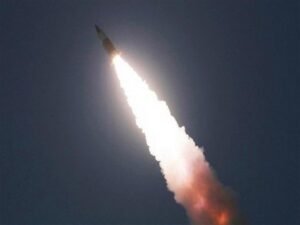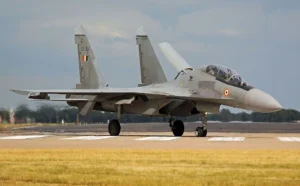Source : Asia Times
 |
| Representative Image |
Sydney: China has drawn Australia into its security tensions with India after New Delhi and Canberra signed a defense accord that could see their two military forces sharing facilities in sea straits hotly contested by Beijing.
As China and India mobilize more troops and equipment along their fractious Himalayan border, the Chinese Communist Party-backed Global Times said that Beijing could view the India-Australia accord as a direct threat.
“Some analysts regard this move as a joint effort between India and Australia to counter China,” the newspaper’s website said in an article that carried the headline “Will Aussie, India coordinate to confront China?”
“An enhanced partnership between Australia and India, especially in terms of military cooperation, will bring about a new change in the strategic pattern of the entire Indo-Pacific region,” the article warned.
First floated during bilateral talks in December, the military accord was quietly initialed this week after a virtual summit between Indian Prime Minister Narendra Modi and his Australian counterpart Scott Morrison that lifted ties to the level of a Comprehensive Strategic Partnership (CSP).
Formally known as the Mutual Logistics Support Arrangement, the accord will improve the interoperability of the two sides’ respective military forces to allow for more engagement. A Defense Science and Technology Implementing Arrangement, meanwhile, will boost cooperation between their research organizations.
This is India’s fifth CSP collaboration in the region, following on similar deals with the US, Japan, Indonesia and Vietnam. It is thus perhaps unsurprising that China views the expanding network of maritime partners as potential encirclement.
With the agreement, Australia is now more firmly the fourth pivot in a long-mooted quadrilateral security arrangement, often referred to as the “Quad”, with the US, Japan and India.
The arrangement, first initiated as the Quadrilateral Security Dialogue in 2007, had previously been put on ice by New Delhi because it was reluctant to upset China. That view has apparently changed after a second Himalayan border standoff in recent years.
India has separately courted Vietnam and the Philippines, Southeast Asian states which oppose China’s military settlements on contested South China Sea atolls and features.
It is now likely that Canberra will be invited to send vessels to Malabar, a naval exercise involving India, the US and Japan that China views as a hostile act. There will be a reciprocal arrangement for Australian exercises.
The two sides have engaged in at least three iterations of AUSINDEX joint naval exercises, beginning in 2015. Exercises held in April 2019 in India’s Visakhapatnam saw Australia send a landing helicopter dock, frigates, a conventional submarine and a Durance-class multi-product replenishment oiler.
The detail attracting the most attention in the India-Australian security pact is an agreement on reciprocal access to logistics facilities — in effect, the joint use of military bases — which may include cooperative supply lines. The focus seems to be on maritime security, but it may involve air forces as well.
Initial collaboration would probably center on the islands of Andaman and Nicobar (India) and Cocos (Australia), which border some of Asia’s most vital trade routes.
Andaman and Nicobar are near the Strait of Malacca, used by thousands of ships traversing between the Pacific and Indian oceans; the Cocos islands are close to the Lombok and Sunda straits.
Both nations are battling to maintain constant surveillance of the waters, which have recently attracted unprecedented attention from China. India has reported increased activity by Chinese submarines and surface ships, while Australia has been monitoring oceanographic surveys conducted by Beijing.
“In the current geopolitical competition in the Indo-Pacific, these islands can provide advantages for strategic, practical, and signaling purposes,” said Indian academic Darshana Baruah, who is involved in a two-year study of Indian Ocean strategy by Australia’s National Security College.
“Access to these islands will not only strengthen Australia’s interests in the eastern Indian Ocean but will also provide a platform to increase its military engagements to the rest of the Indian Ocean – a challenge in Australia’s Indian Ocean policy.
“Similarly, India stands to gain strategically with access to Cocos islands, expanding its reach and presence into Southeast Indian Ocean across the Indonesian straits and into the Pacific,” he said.
Both Australia and India already operate maritime surveillance using P-8 Poseidon aircraft, but mostly from bases on their respective mainlands. Australia also has access to an airbase at Butterworth under a deal with Malaysia.
At the maritime level, there is a potential for joint anti-submarine patrols and cooperation in humanitarian responses and anti-piracy operations. One model for the collaboration could be the joint patrols operated by India and France over the western and southwest Indian Ocean from France’s Reunion island.
A potential sticking point is how the deal is viewed in Indonesia, which would have to agree to any overflights of its territory. India signed a defense cooperation pact with Indonesia as part of their Comprehensive Strategic Partnership but it’s not immediately clear it covers overflights.
Indonesia’s brittle relationship with China deteriorated in late December when dozens of Chinese fishing and coastguard ships entered its exclusive economic zone (EEZ) off the northern islands of Natuna and remained in place for weeks. China has territorial claims on the islands, as do Vietnam and Malaysia.
China’s ambivalent reaction suggests that it views any enhanced security arrangement between India and Australia as a containment measure, with Global Times noting India “may hope to shape more pressure toward China from the international community — in particular from the West.”
“Their common interests in dealing with rifts with China do play a role in urging the two countries to coordinate strategically, which deserves China’s vigilance,” it said, warning this would “shape a confrontational atmosphere in the region, jeopardizing peace and stability.”











